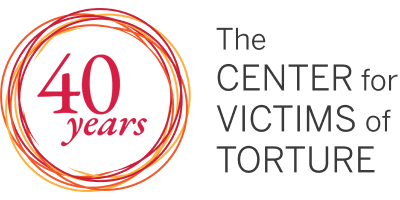In the U.S., April serves as the month for awareness and prevention surrounding sexual assault.
Sexual assault continues to be a prevelant issue:
- A U.S. resident is sexually assaulted every 68 seconds.
- One in six U.S. women have survived a rape or attempted rape.
- One in 33 U.S. men have survived a rape or attempted rape.
That said, marginalized individuals are at a disproportionate risk for sexual assault globally, namely within the refugee and asylum seeking populations that CVT services.
While these rates are staggering on their own, these numbers only increase when you add intersectional identities. This includes considerations like refugee status, race or ethnicity, sexual orientation or gender identity or involvement with the carceral system.
80,000 incarcerated individuals are sexually assaulted each year.
Jails and prisons are disproportionately made up of Black and Brown individuals, a majority of whom are there for non-violent crimes. And, many who are within jail (as opposed to prison) are awaiting trial or sentencing.
The recurrence of this issue is acknowledged on a national level, and policy efforts such as the Prison Rape Elimination Act (PREA) have been created to prevent assaults during incarceration.
However, the reality is that these assaults occur by both other inmates and staff. This often leaves little room for survivors to feel safe and empowered to make reports, let alone the reports be taken seriously.
Disproportionate rates of violence towards the LGBTQ+ community are continually high.
- Around one in eight lesbian women and almost 50 percent of bisexual women have survived a rape in their lifetime.
- 64 percent of transgender people have experienced sexual assault.
- Four out of 10 gay men have experienced sexual violence within their lives.
- Almost 82 percent of women within the LGBTQ community that sought services from CVT had been sexually assaulted
This is largely due to discrimination and bias. Unfortunately, queer community members often endure violent actions like these, but are rarely met with action towards justice.
According to Rutgers University, this is due to responses that minimize their experience, question their sexuality, victim blame and ultimately cause more harm.
People with disabilities are three times more likely to experience violent crimes like sexual assault.
According to American Progress, field leaders attribute these high numbers and gaps in support to an overall lack of inclusive sex education and stereotyping of individuals with disabilities.
The result is high rates of victimization, often with the survivors unable to share their story or not having their story believed.
Within recent years, reproductive justice and women’s initiatives have discussed the gap between sexual assault prevention work and disability justice. Luckily, this has led to more targeted prevention work.
Refugees are often survivors of torture, which frequently includes sexual assault.
The above data and figures reflect the experience of survivors within the U.S. At CVT, our clients are largely refugees from other countries, but unfortunately, this does not improve the likelihood of sexual assault.
This is because rape, sexual degradation and assault are commonly used as tactics of torture. As an example, of the women seen at CVT locations between 2017 and 2020:
- Over 67 percent were harassed by authorities
- 55 percent survived sexual assault
- 49 percent survived rape as a form of torture
Survivors report sexual shame and humiliation in their torture experience, all of which can have lasting mental and emotional effects.
When it comes to survivors of sexual assault of any type, the commonality we see is that they are often not believed or supported.
The good news: Many advocacy groups, CVT included, and research cohorts are working to both showcase the prevalence of sexual assault and support those who have been affected.
With increased efforts from these groups and others to address the causes of this sort of assault, such as:
- ongoing conversations surrounding the importance of consent
- policy advocacy efforts that address the roots and outcomes of torture
- Mental health services and initiatives that support survivors,
We can collectively look towards a future where these numbers ultimately dwindle to nothing.
